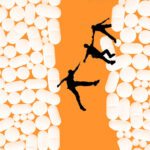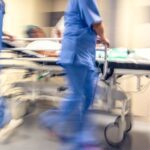There’s doing the best possible job as a physician, then there’s choosing the best option given the circumstances.
The same gods who fated me to become a medico also procured me an ongoing avuncular role with medical students and junior docs. I thank the gods as this serves to keep me honest.
That said, I recall a time, perhaps 10 years ago, when I conveyed a notion that was totally abhorrent to one of my youthful charges. I proposed that there were different performance levels for doctors. Much like a star rating system: as with uber drivers, hotels, motor mechanics. Moreover, those who genuinely aspire to be a 5-star doctor can dip in times of overload, to a 2 or 3.
This ace medical student took offence, threatening to report me (I’m not sure to whom) for professional insurrection. Privately, I was reassured, as there is a rich history of sedition throughout the history of medical practice. I was simply acting to mirror that history, of which he was yet unaware.
Sir William Osler, touted as the father of modern medicine, said: “The good physician treats the disease; the great physician treats the patient who has the disease.” That’s surely a flagrant rating system for physicians. So, what of it. Let’s try a little quiz.
Jim has severe right knee pain due to osteoarthritis. However, there’s an elephant in the room. Jim’s BMI is 32, he is on an antianxiety medication (diazepam), an antidepressant (venlafaxine), and a combination of long- and short-acting opioids to the equivalency of 160mg oral morphine equivalent daily dose (oMEDD). Jim still loves his beer (5-7 standard drinks per day). Functionally Jim is slowly deteriorating. As his GP, do you:
A: refer Jim to an orthopaedic surgeon for a total knee replacement
B: refer Jim to a dietitian for assistance in weight reduction
C: refer Jim to a physiotherapist to help him work out an exercise program with the dual aim of weight loss and improving his mood without needing to revert to prescription medications and alcohol
D: discuss the benefits of partially deprescribing his opioids to an oMEDD level of 40mg. This is because while he will need surgery down the track, his current oMEDD means that it will be difficult to impossible for him to obtain good post-operative pain relief, as he is now in a red flag therapeutic zone, where the dose-response curve has flatlined. You add that as far as pain is concerned, a knee replacement customarily carries a very painful post-operative and recovery phase
E: continue with your cascade prescribing?
You settle for A.
Let’s change hats. You are now the orthopaedic surgeon. Do you
A: book Jim for your next available theatre time and anticipate that your anaesthetist colleague together with Jim’s GP can manage the pain
B: inform Jim that you would be happy to operate after he has lowered his BMI to a more suitable level
C: inform Jim that you would be happy to operate after Jim has lowered his BMI and oMEDD to a more suitable level
D: engage Jim in a discussion about pre-habilitation, including reducing his post-operative infection risk via “C” and other life-style changes etc.?
You settle for A.
Now imagine you are the anaesthetist. Do you …
By now you may have guessed the route of my rhetoric.
The answers to the quiz may change according to our many subconscious biases. A very esteemed senior neurosurgeon once told me that early-career surgeons operate on everything, mid-career operate on fewer and late-career surgeons are highly circumspect about their patient selection.
Perhaps it is only those who have professionally self-actualised and have the luxury of lounging at the pinnacle of Maslow’s hierarchy of needs who can truly be a consistent 5-star player. It could be argued that we are talking about professionalism here. I think it’s more complex than that. Besides, professionalism itself is a fluid construct.
I once sat in a workshop with a professoriate of academics trying to define professionalism. The argument didn’t end, suggesting that it is about having the conversation rather than a fixed description. The forces driving professional behaviour include time pressure, trust, and the quality of the therapeutic alliance, which is bidirectional. How you discharge your role to the community of patients may be at odds with how you interact individually. We all need to decide on the “best bang for buck”. Time management is tempered by opportunity costs.
Just last week, I was debriefing a junior medical officer. He recounted an incident in the emergency department. This 5-star JMO had invested a sizable amount of time educating his patient about lifestyle changes that would assist them. He had discussed his case with the ED consultant, who then totally sabotaged his management plan with an ad hoc order to just “move the patient on”. When you are solely focused on Key Performance Indices and treating symptoms, this is a pragmatic choice.
So how relevant was Jean-Martin Charcot’s 19th-century observations that “Symptoms, then, are in reality nothing but a cry from suffering organs”? Which of Jim’s many organs are suffering?
Today, many patients receive their care in a disconnected manner. Those who contribute are all busy. A natural psychology is to believe that you are always more time-poor than everyone else in the care supply chain.
So, to my final question. For how much longer can we afford to allow “I’m too time-poor” to be the get-out-of-jail-free card that it has become?
Australian health bureaucrats made the case that Medicare sought to provide a Holden Commodore level of service. Not a Rolls Royce nor a second-hand Lada. Countering that, my uncle, a butcher and a most practical man, reminded me that he could not afford to buy cheap.
The human cost to our profession is I fear, disenchantment, loss of motivation and burnout. The cost of reputational damage is also concerning. But has anyone tried to calculate the monetary cost? (By the way, Holden went bust in 2020.)
It sure is complicated, maybe even wicked. Ten years later, I wonder what that same ace medical student would say now.
Associate Professor Kees Nydam was at various times an emergency physician and ED director in Wollongong, Campbeltown and Bundaberg. He continues to work as a senior specialist in addiction medicine and to teach medical students attending the University of Queensland, Rural Clinical School. He is also a poet and songwriter.





